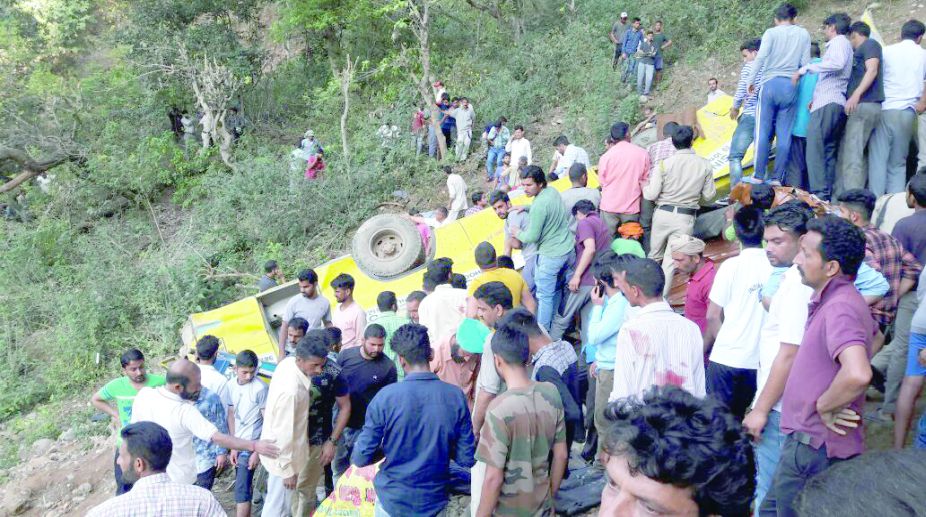Father son duo drown in pond
Eyewitnesses said that Govinda Nag, a cook, was in an intoxicated state when he took his son for a swimming lesson to the nearby pond.

Nurpur school bus accident.
The Nurpur school bus accident, killing 27 persons, including 23 children, in Kangra district has exposed gaps in rescue arrangements in accident and disaster prone Himachal Pradesh, which feels the pinch every time there is a tragedy.
The hill state glaringly lacks the system for active rescue to save lives and the efforts every time are reduced to just tracing and retrieving the bodies.
Himachal’s demand to Centre for positioning National Disaster Response Force (NDRF) has been hanging fire for long, and HP’s own proposal to have a State Disaster Response Force (SDRF) is still in discussion.
Advertisement
Some NDRF personnel are, however, stationed in Jassur near Nurpur, but they too were of no use to the state, even in the 9 April school bus accident, which occurred just 20 kilometres away, as there are so many formalities to requisition them.
“We called NDRF personnel for rescue operations immediately after the bus accident. Their reply was that they don’t have petrol. The Deputy Commissioner too sought their help, but he was told to first get the permission from Bathinda, where NDRF is based. Had they rushed to the spot early, we could have saved some more lives,” Nurpur MLA, Rakesh Pathania told The Statesman. “They came when the rescue was over,” he added.
The bus had rolled down into a deep gorge.
“The entire four-hour rescue operation was done by locals and Home Guards, bare-handed. They had to stop every truck for some kind of tools in panic as the children were badly trapped in the in the mangled bus,” Pathania said.
In most other accidents and natural calamities in Himachal, the entire rescue is left to community, often untrained, as the trained rescuers either reach the spot with time lag due to distances involved in the hill state, or they are unable to handle.
Most of the time, the state has to seek the help of Army, ITBP and the NDRF based in Bathinda only to trace and retrieve the bodies.
The repeated incidents of drowning in turbulent Himachal rivers, which claim several lives, throw open the need for ‘live rescue’, that the state has failed to address.
Whether it was 2005 tragedy of under-construction Balliey Bridge collapse in Kharo in Kinnaur in 2005, wherein more than 30 army men were drowned in Satluj, or the drowning of 23 Hyderabad students in Beas River in 2014, the state was just mute spectator, not equipped to even retrieve the bodies.
Not surprisingly, even in case of water sports, the river rafting allowed in state rivers, especially Beas and Satluj, the state has no trained divers in case of tragedy— It’s just the local divers, if any, can come to the rescue of the victims.
“The distance is a problem in Himachal. But we do have trained home guards for search and rescue at 100 locations across the state, rescue teams and equipment at another 30 to 35 fire stations and have trained volunteers at several places as local community could be the quick rescuer,” DC Rana, Special Secretary, Revenue and Disaster Management said.
Rana admitted that the state does not have arrangements for specialised rescue, which is ticklish and difficult and can be taken up by highly trained personnel.
Advertisement